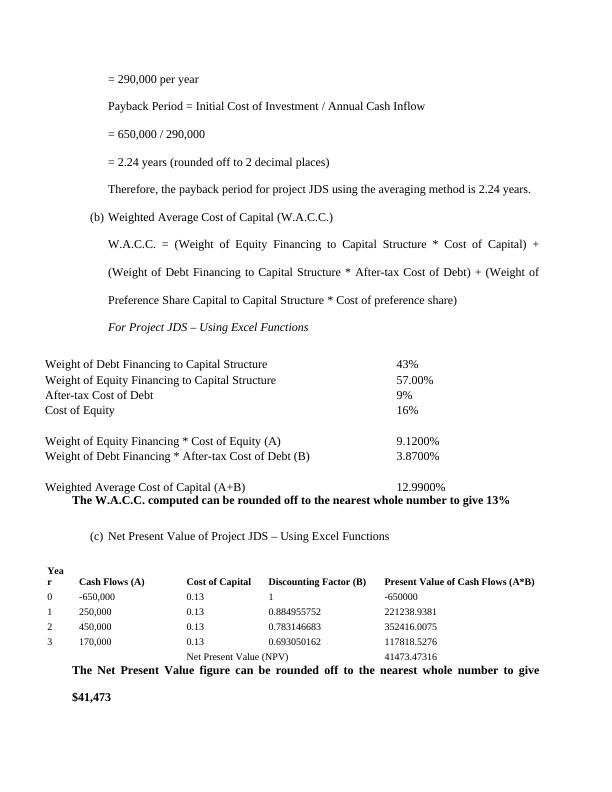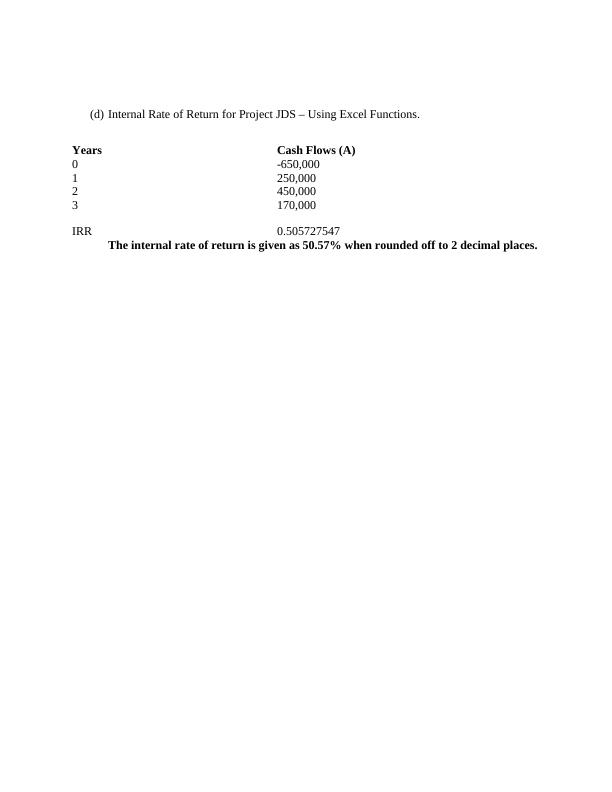Assignment on Payback Period
Added on 2021-02-02
10 Pages2388 Words118 Views
End of preview
Want to access all the pages? Upload your documents or become a member.
Calculation of Ratios for Financial Analysis
|13
|3363
|218
Corporate Finance: Analysis of Proposed Project and Weighted Average Cost of Capital
|9
|1874
|116
Report on Planning for Investment in the Project : Redstone Plc
|14
|3944
|79
Financial Management and Ratio Analysis of Marks and Spencer Plc
|17
|3841
|401
Finance Questions Set 1 WACC Under Imputation Tax System Particulars Book Value After Tax Cost of Capital Long Term Debt
|14
|1986
|372
Estimation of Weighted Average Cost of Capital Question Answer 2022
|9
|2314
|16



